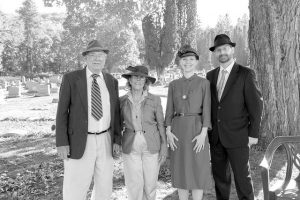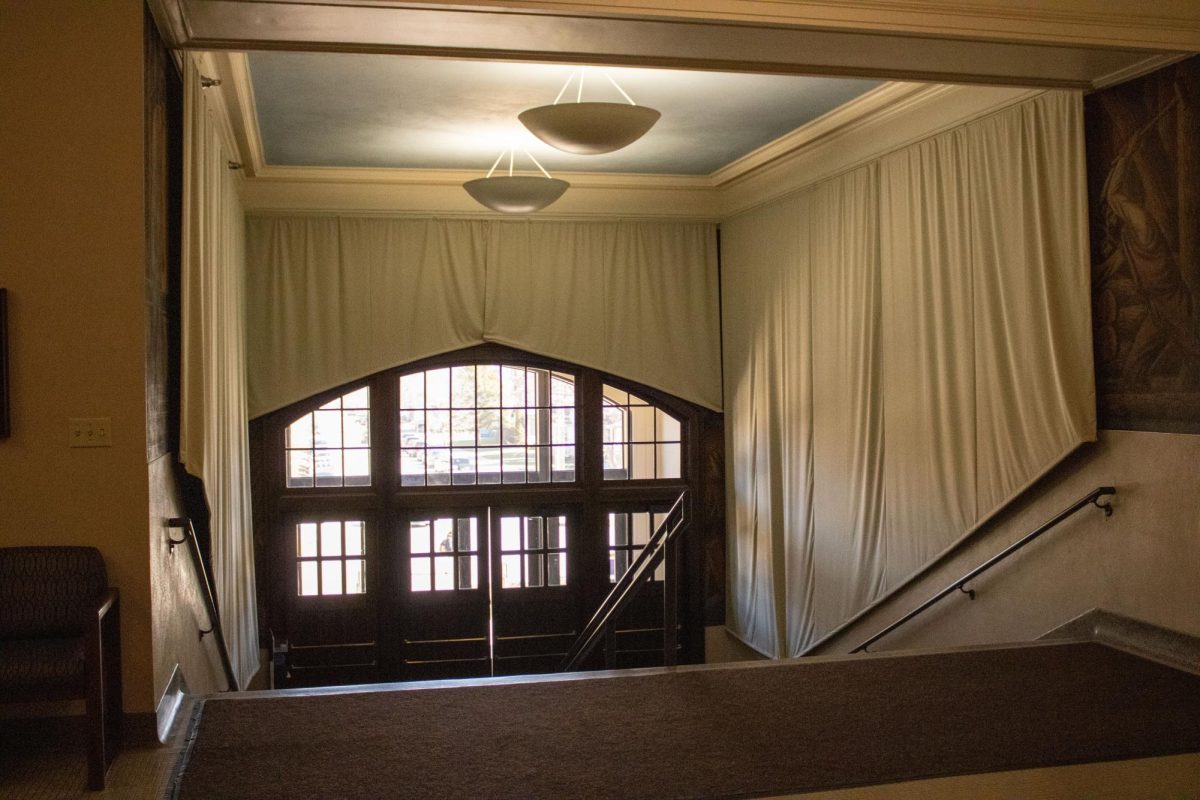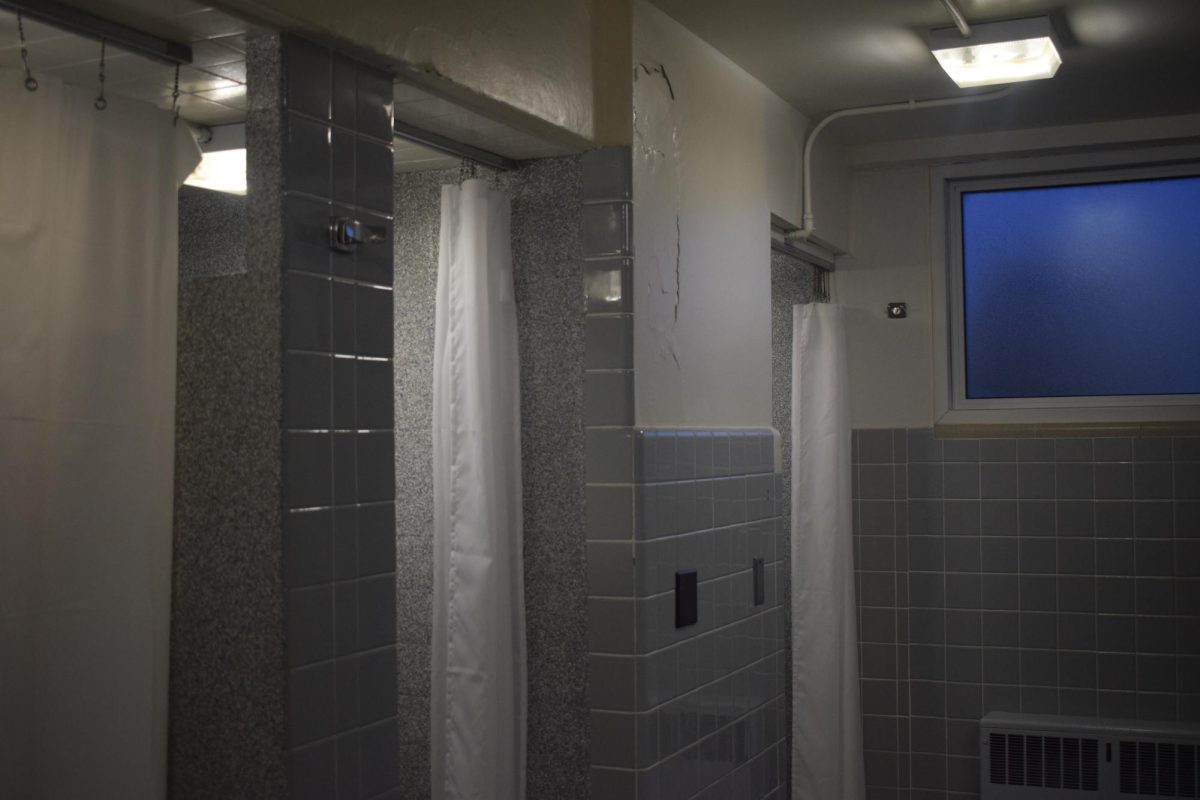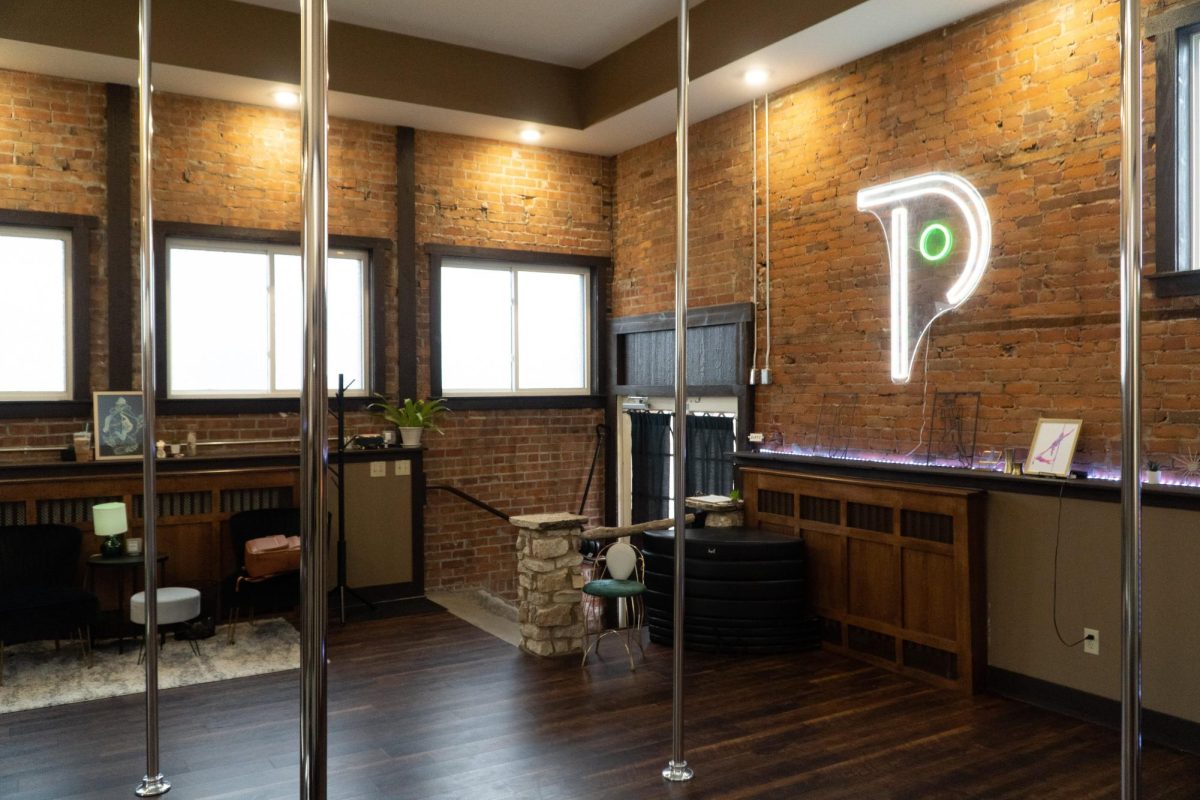
Community actors help tell the story about those buried in the Woodlawn Cemetery in Winona. (Photo by Sarah Murray)
Kalika Valentine-Erikson/Winonan
From Huff and Harriet to Laird and Louisa, many of the street names in Winona have a person and a story behind them. There are over 360 named streets in Winona, and the Woodlawn Cemetery Walk guides explained the naming behind them.
On October 10 and 11, the Winona County History Center and Woodlawn Cemetery held the seventeenth annual “Voices From the Past: Woodlawn Cemetery Walk.” This year’s theme was “On the Street Where You Live,” and was dedicated to explaining the pasts of many families with streets named after them and often by them.
The cemetery walk is an annual event in Woodlawn Cemetery, Winona’s oldest cemetery. Woodlawn Cemetery was officially founded in 1862, five years after Winona officially became a city. Each year has a different theme, but the overall premise is the same. Actors and actresses, who are volunteers, stand by the grave site of prominent members of Winona’s past and tell their stories.
Lee Gundersheimer, who also works at the Great River Shakespeare Festival, appreciates the accommodating nature of the event.
“One thing that’s great about this…is if you want to participate, they will find a way,” Gundersheimer said.
Guides took visitors to seven sites, and told extra stories along the way.
The first site’s speaker was Orrin Clark, one of the first settlers in Winona, who has Orrin Street named after him. Orrin’s great-niece, Harriet, married a man with the last name Huff, and they had a son named Wilson. Orrin’s brother, John Scott Clark, was also the first person to be buried at Woodlawn Cemetery.
At a stop in the middle of sites two and three, an actor portrayed a man named Orville Moore, one of more than 800 people at rest in Potter’s Field. Potter’s Field was a place where people could be buried if they were unable to afford a family plot in the cemetery. For every marked stone, there are 10-40 more people buried, explained a tour guide.
Subsequent sites explained the namesakes of the streets Pelzer, Louisa, Vila, and Gould, just to name a few.
Some streets were not named after families. Site six was the grave site of Catherine Smith, who many Winonans called Aunt Catherine. She came to Winona in 1852 and was the half-sister of John Laird, namesake of Laird Street. She was given the task of naming Walnut Street, which she named after the trees that lined the street.
Along with street names, the guides on the walk discussed how many people ended up in the cemetery.
Many of the people buried in Woodlawn Cemetery are children. Guides explained that infant and child death was extremely common in the nineteenth century. Many stones read simply “Baby,” as most families did not name infants who died at birth. Many stones have lambs on them to symbolize that children are buried there. Almost all of the families who streets were named after lost at least one child; most lost more than one.
Other common causes of death were Consumption, now known as Tuberculosis and Scarlet Fever. According to one guide, people with these diseases often lived in tents inside the cemetery, so they were not only isolated from the healthy, but also close to where they would end up buried.
Tom and Coleen Bremer attended the walk for their second time. The Bremers have lived in Winona for seven years and decided to attend the walk after hearing about it in the newspaper, on the radio, and through friends who volunteered.
“I thought it was great,” said Coleen.
Her husband, Tom, agreed.
“They always do such a good job. I’m always impressed with the actors. We always learn a lot,” he said.
The Woodlawn Cemetery Walk is an annual event, but the cemetery is open year round from dusk to dawn for exploration, and further information is available at the Winona County History Center.










































